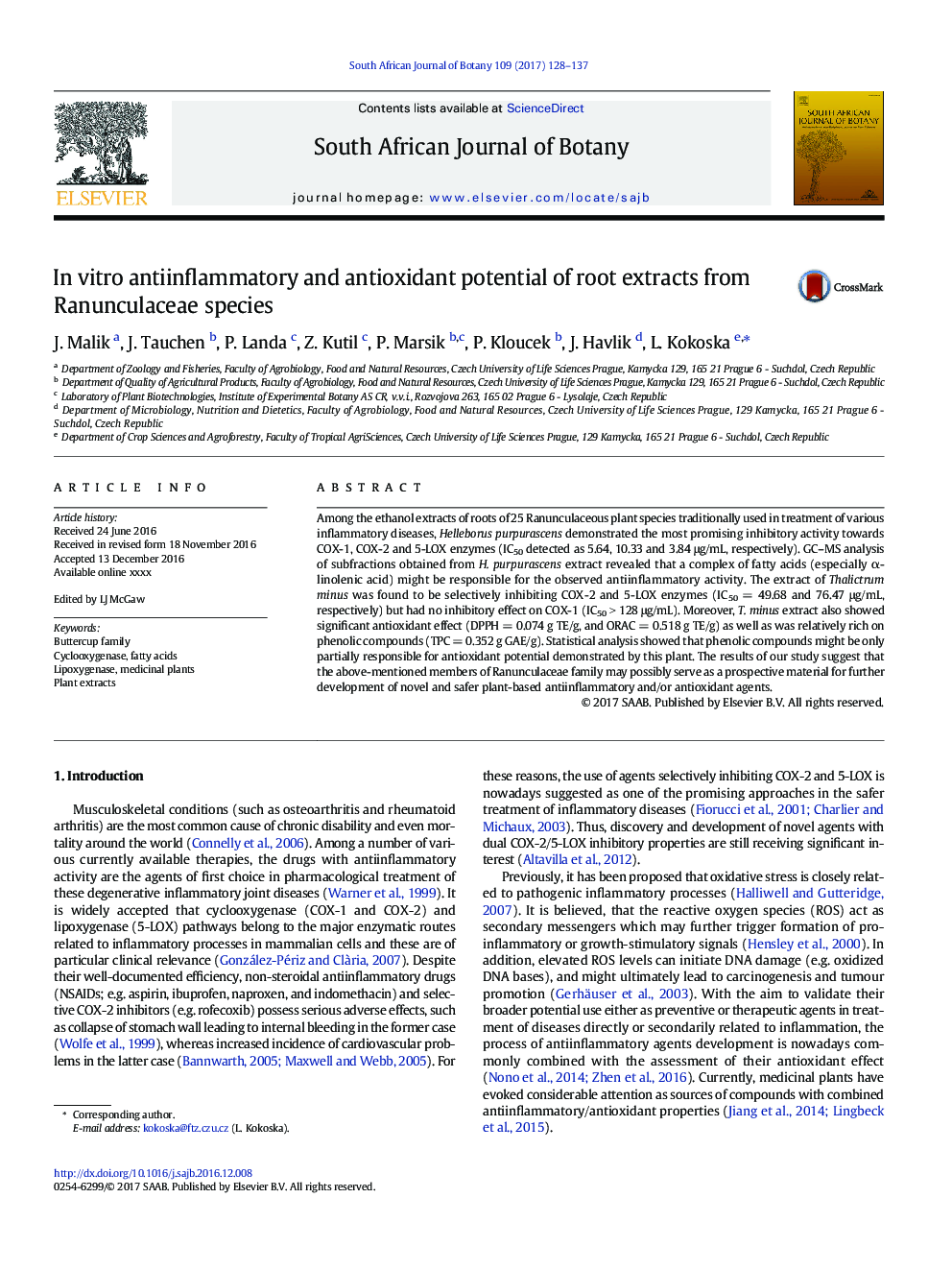| Article ID | Journal | Published Year | Pages | File Type |
|---|---|---|---|---|
| 5763040 | South African Journal of Botany | 2017 | 10 Pages |
Abstract
Among the ethanol extracts of roots of 25 Ranunculaceous plant species traditionally used in treatment of various inflammatory diseases, Helleborus purpurascens demonstrated the most promising inhibitory activity towards COX-1, COX-2 and 5-LOX enzymes (IC50 detected as 5.64, 10.33 and 3.84 μg/mL, respectively). GC-MS analysis of subfractions obtained from H. purpurascens extract revealed that a complex of fatty acids (especially α-linolenic acid) might be responsible for the observed antiinflammatory activity. The extract of Thalictrum minus was found to be selectively inhibiting COX-2 and 5-LOX enzymes (IC50 = 49.68 and 76.47 μg/mL, respectively) but had no inhibitory effect on COX-1 (IC50 > 128 μg/mL). Moreover, T. minus extract also showed significant antioxidant effect (DPPH = 0.074 g TE/g, and ORAC = 0.518 g TE/g) as well as was relatively rich on phenolic compounds (TPC = 0.352 g GAE/g). Statistical analysis showed that phenolic compounds might be only partially responsible for antioxidant potential demonstrated by this plant. The results of our study suggest that the above-mentioned members of Ranunculaceae family may possibly serve as a prospective material for further development of novel and safer plant-based antiinflammatory and/or antioxidant agents.
Keywords
Related Topics
Life Sciences
Agricultural and Biological Sciences
Agronomy and Crop Science
Authors
J. Malik, J. Tauchen, P. Landa, Z. Kutil, P. Marsik, P. Kloucek, J. Havlik, L. Kokoska,
